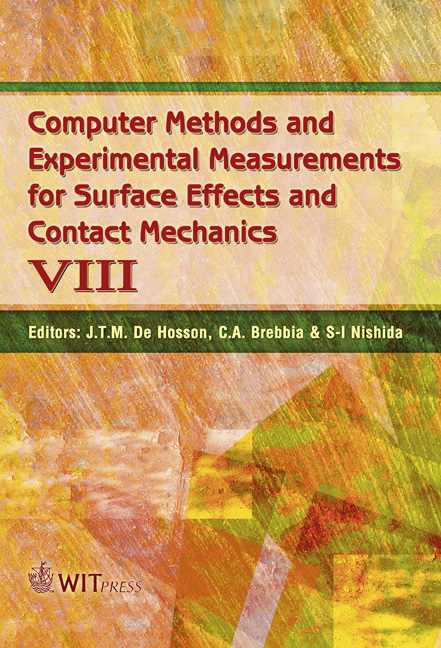Investigation Of The Temperature Behaviour Of Sliding Rubber Materials
Price
Free (open access)
Transaction
Volume
55
Pages
10
Published
2007
Size
1,276 kb
Paper DOI
10.2495/SECM070151
Copyright
WIT Press
Author(s)
O. Lahayne & J. Eberhardsteiner
Abstract
At the IMWS a testing device called Linear Friction Tester (LFT) was developed, which is mainly used to characterise and quantify the friction behaviour of tire materials under varying conditions. During the friction process a considerable amount of heat is generated at the contact surface. Starting from theoretical approaches, there is supposed to be a strong interrelation between the friction coefficient µ and the temperature T of the rubber. By means of temperature sensors, FE-calculations and a model for the heat conduction it was possible to measure and calculate the heating of the rubber with high accuracy. In this paper some examples are presented for results of such measurements. A model for the heat conduction is illustrated, and testing the correlation between measurement and calculations validates the practicability of the model. Keywords: Rubber, Temperature, Friction, Tire. 1 The testing device In 1997 the Linear Friction Tester has been constructed [3]. The test conditions at the LFT are well defined, since it is placed in an air-conditioned container, and in good agreement with realistic breaking situations. The core of the device is a linear drive that pulls a sledge with a rubber test specimen over the friction surface. A pneumatic system applies the vertical load (up to 2000 N or 10 bar). The test specimens have a size between 10 and 30 cm2 and contain different arrangements of lamellae. The friction surfaces were cut out of real road surfaces. Also friction tests on snow and ice surfaces can be performed. For some experiments additionally a high-speed-camera recorded the deformation of the sample.
Keywords
Rubber, Temperature, Friction, Tire.





